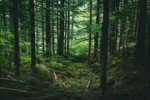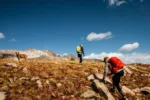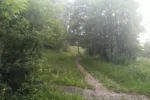How to Navigate at night – Don’t get lost in the Dark!
This post may contain affiliate links. This means that we may receive a small commission from purchases through those links. Read more in our affiliate disclosure.
So, you’ve gotten lost in the forest, the sun is setting, and your phone is about to die. Now what?
Here’s how to navigate at night when your technology failed you.
- Introduction
- What to do when you get lost in the dark?
- Human Night Vision
- The Celestial Compass: Navigating by the Stars
- Moon as a Guide: The Science of Lunar Navigation
- The Symphony of the Night: Navigating by Sound
- Touching the Night: Navigate by Feel
- Embrace the Night: A Final Word on Nocturnal Navigation
What to do when you get lost in the dark?
Wait, you’re lost in a dark forest right now? Okay, here’s what you do:
- Stay Calm: Your first reaction might be to panic, but it’s crucial to remain calm. Take a few deep breaths, sit down if you need to, and give yourself a moment to assess the situation.
- Contact someone: Looks like your phone is still working. If you are in trouble and need rescuing, text your geographically closest friend – or if available and you have the number at hand, emergency services – your current GPS coordinates. Texts might go through even if you don’t have enough cell signal to call. If it works, stay put and wait for them.
- Assess Visibility: Moonlight or clouds (if they are illuminated by nearby cities) should provide enough light for you to keep moving. If there’s neither, it will likely get too dark to move without tripping or potentially falling down a cliff. In such cases, your priority should be to find or make a shelter and wait until daylight.
- Find a Light Source: Ideally, you would have packed a reliable light source, such as a headlamp or flashlight. It’s always good to bring one on any hike, even if you don’t plan to stay out late. If you have one, but you’re not sure how long the battery will last, see if you can adjust your eyes to the darkness first; and otherwise use the lowest-brightness setting. If you need to rely on your phone, don’t use the flashlight, that will burn through the battery real quick. Instead, illuminate the path with the light from your screen set to low brightness – your eyes will adapt to a level where that’s enough.
- Memorize the map: This is a really useful skill to train in low-stakes situations, so you have it when you need it. If you have Google maps or the like, try to memorize the least complicated way to the nearest settlement or road, so you can follow it even if your phone turns off. If there’s no such thing, memorize the direction in which you’re most likely to find civilization, and keep heading that way.
- Pick a direction and follow it: Based on your knowledge of the map, or any cities you might be able to make out on the horizon, pick a direction to go and stick with it. The worst you could do is to walk in circles all night.
- Use the moon: The bright side of the moon points at the sun – west in the evening, east in the morning.
- Use the north star: If the stars are visible enough and you’re in the northern hemisphere, look for the north star: Locate the Big Dipper constellation, then identify the two stars that form the outer edge of the dipper’s bowl (these are called the “pointer stars”). Draw an imaginary line from the bottom pointer star to the top one, then extend that line about five times its length. This line will lead you directly to the North Star.
- Trust Your Senses: In the absence of visual information, your other senses become crucial. Listen for sounds that can help you orient yourself – the rush of a river, or of a road.
- Take note of the location of the moon, stars or illuminated parts of the horizon: These will give you a sense of direction.
- Follow the basic rules of getting un-lost: When at a crossroads, follow the best travelled, widest, best aligned with your target direction, most downhill path, in this order.
- Stay calm and good luck. You got this.
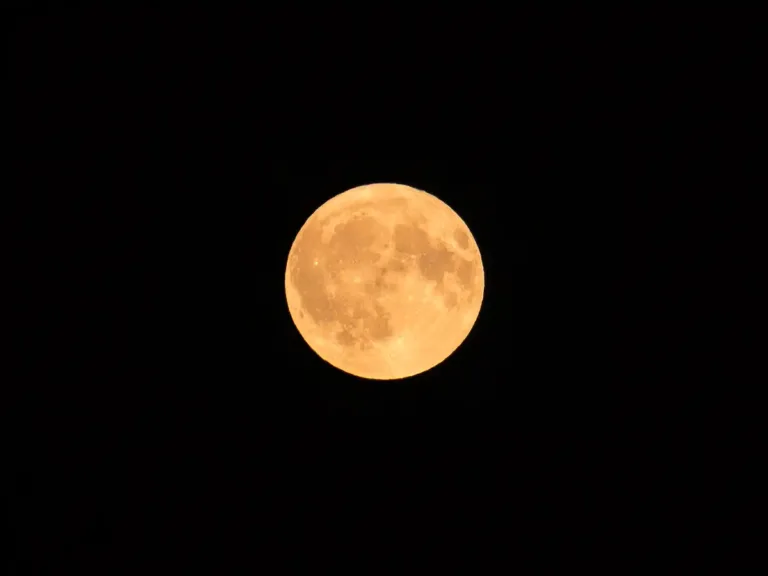
Ooookay. From here on out, I’ll assume you are more out of theoretical curiosity, or because you want to arm yourself with knowledge for your next outdoor adventure.
Human Night Vision
The human eye is a marvel of evolution, capable of seeing in conditions ranging from bright sunlight to near-total darkness. This adaptability is due to two types of photoreceptor cells in our eyes: cones and rods.
Cones are active in bright light and are responsible for our color vision. They’re concentrated in the center of the retina, in an area called the fovea. This is why objects appear most clear and colorful when we look directly at them.
Rods, on the other hand, are more sensitive and work better in dim light. They’re distributed more evenly across the retina, with a higher concentration around the edges. This distribution explains why, in low light, objects often appear clearer when we look slightly to the side of them.
When you find yourself in a low-light situation, your rods take over in a process known as “dark adaptation.” This process can take up to 30 minutes. During this time, your eyes become more sensitive to light, and you’ll start to see more details in your surroundings.
Interestingly, the human eye can detect light levels as low as a single photon, the smallest unit of light. However, for an image to form in our brain, we need at least several hundred photons to hit our retina. In practical terms, this means that under ideal conditions (clear night, far from city lights), you can see a candle flame from about 30 miles away!
To enhance your natural night vision, avoid looking directly at light sources, as this can cause temporary “blindness” or afterimages. This is because bright light can “bleach” the pigments in the rods and cones, reducing their sensitivity. It takes time for these pigments to regenerate and for your eyes to regain their full dark-adapted vision.
Another fascinating aspect of night vision is the phenomenon known as “Purkinje shift.” As light levels drop, our perception of color changes. We become less sensitive to red light and more sensitive to blue and green light. This is why the colors of a sunset can look so different from the colors of the same landscape seen by moonlight.
The Celestial Compass: Navigating by the Stars
Navigating by the stars is an ancient practice, and with a little knowledge, you can use the night sky to find your way. In the Northern Hemisphere, one of the most reliable celestial landmarks is the North Star, or Polaris.
To find Polaris, first locate the Big Dipper constellation. The two stars that form the outer edge of the dipper’s bowl are known as the “pointer stars.” Draw an imaginary line from the bottom pointer star to the top one, then extend that line about five times its length. This line will lead you directly to Polaris.
The mean thing about finding constellation is that, the more stars you are able to see, the harder they get to find. Here’s one to practice:
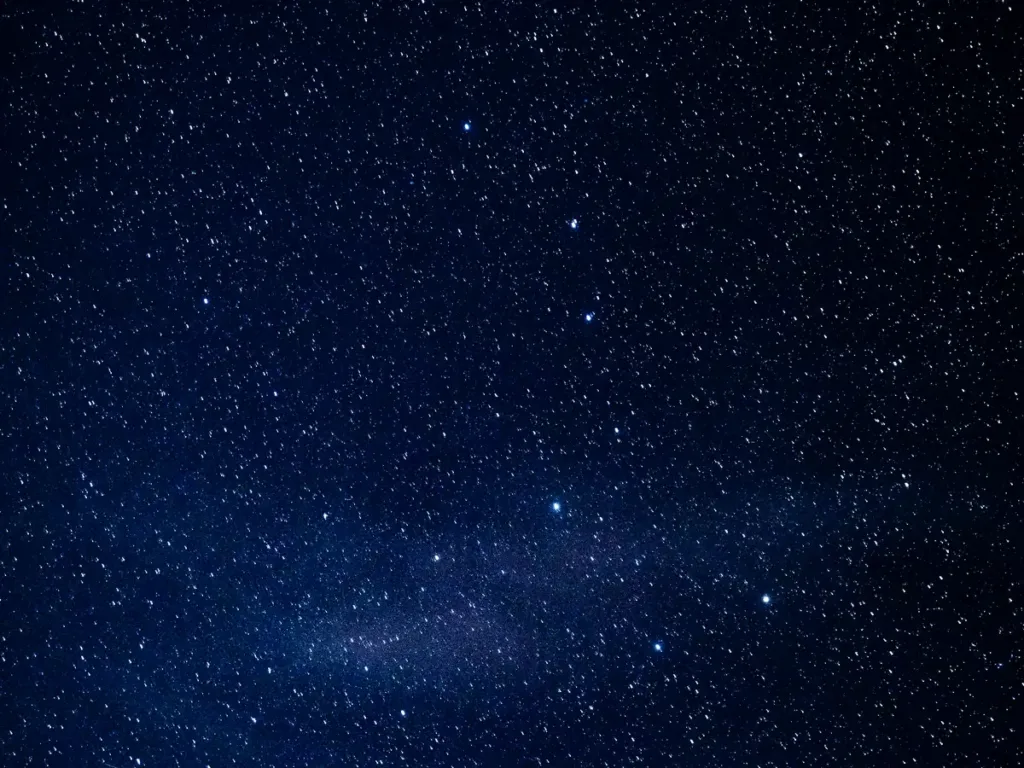
Did you find it? The pointer stars are in the bottom right of the image, indicating Polaris somewhere off-screen to the right of the image.
As the Earth rotates, the stars appear to move across the sky, but because Polaris is almost directly above the North Pole, it remains relatively fixed, leading to cool pictures like this:
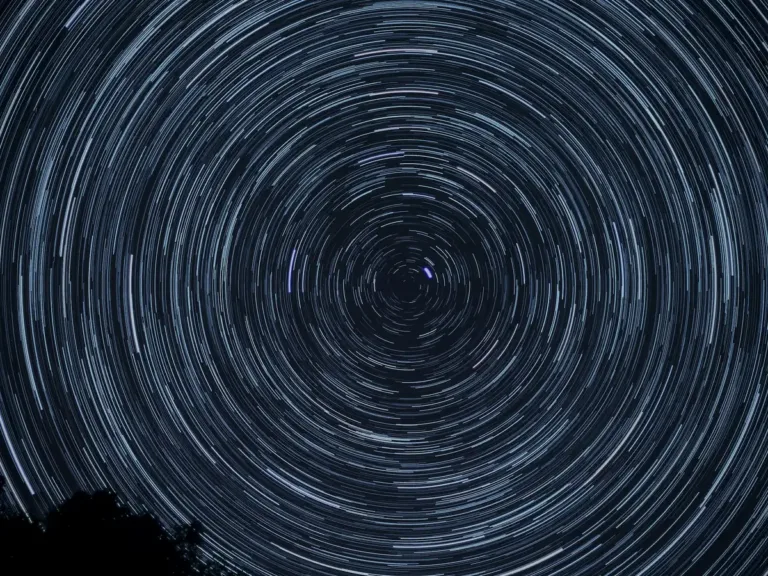
Now try to picture that it’s not actually the stars that move, it’s the rock we’re all sitting on. I always get a tiny bit of vertigo when I do that.
Moon as a Guide: The Science of Lunar Navigation
The moon, our closest celestial neighbor, has been a guide for navigators for centuries. The key to lunar navigation lies in understanding the relationship between the moon, the sun, and the Earth.
As the moon orbits the Earth, it’s illuminated by the sun from different angles. This causes the moon’s phases, from new moon to full moon and back again. The bright part of the moon is always facing towards the sun, which gives us clues about the east-west line.
In the evening, the bright part of the moon points towards the sun, which is currently under the western horizon. Likewise, in the morning, the bright side of the moon points at the sun currently sitting under the eastern horizon. Easy! No need to get confused about waxing and waning moons.
At moonrise, when the moon first appears above the horizon, it’s due east. At moonset, when the moon disappears below the horizon, it’s due west. However, the moon moves across the sky just like the stars, so these directions change over the course of the night. So, around midnight, it is much harder to gain directions form the moon – but as long as you are not in tropical regions, you can always rely on both the moon and the sun, while they are high in the sky, pointing you towards the equator.
There is also a much more advanced version of lunar navigation, the lunar distance method. This technique was used by mariners in the age of sail to determine longitude, a task that was notoriously difficult before the invention of accurate marine chronometers.
The lunar distance method involves measuring the angle between the moon and another celestial body, such as a star or the sun, at a specific time. This angle, known as the lunar distance, changes over time as the moon moves in its orbit. By comparing the measured lunar distance with a set of pre-calculated values listed in a nautical almanac, navigators could determine the current Greenwich Mean Time. Knowing the time at a reference point (Greenwich) and the local time (determined by observing the sun or stars), they could then calculate their longitude.
Of course, sadly, the lunar distance method is too complex for casual navigation and has been superseded by modern technology, but I think it’s pretty cool!
The Symphony of the Night: Navigating by Sound
In the stillness of the night, our sense of hearing becomes a powerful tool for navigation. The nocturnal soundscape is a symphony of clues about our surroundings.
Water sources, for example, produce distinctive sounds. The gurgle of a stream or the lapping of waves on a lake shore can guide you towards water, an essential resource for any hiker. The calls of nocturnal animals can also provide information. The hoot of an owl, the chirp of crickets, or the rustle of small mammals in the underbrush can indicate the type of terrain or the proximity of potential hazards.
The science of acoustics explains why sounds can seem amplified at night. During the day, the sun heats the Earth’s surface, creating warm air near the ground that rises and mixes with the cooler air above. This turbulence scatters sound waves, causing them to dissipate more quickly. At night, the ground cools, and the air becomes still, allowing sound waves to travel further and clearer.
Touching the Night: Navigate by Feel
In the darkness, our sense of touch becomes a primary means of interacting with the world. Our skin, the body’s largest organ, is a sensitive detector of pressure, temperature, and wind direction.
As you move, your hands and feet can help identify the path ahead. The feel of the ground under your feet, the texture of the vegetation, or the shape of the terrain can provide valuable information about your surroundings. For example, moss tends to grow on the north side of trees in the Northern Hemisphere, so the presence of moss can give you a clue about directions.
Temperature and wind direction can also aid in navigation. At night, open areas like fields or lakes can be cooler than forested areas because the trees trap heat. If you feel a sudden drop in temperature, you might be nearing an open area. Similarly, wind generally blows from high-pressure areas to low-pressure areas. By feeling the wind on your face, you can get a sense of the weather conditions around you and potentially even the landscape.
Embrace the Night: A Final Word on Nocturnal Navigation
Navigating in the dark might seem daunting at first. The familiar world transforms into a realm of shadows and sounds, challenging our perceptions and testing our courage. But within this challenge lies an opportunity for growth and discovery.
Mastering the art of nocturnal navigation is not just about learning to find your way in the dark. It’s about deepening your connection with nature, honing your senses, and cultivating resilience. It’s about stepping out of your comfort zone and embracing the unknown.
So, I encourage you to venture into the night. Learn to read the stars, listen to the whispers of the forest, feel the subtle changes in the wind and temperature. Each night hike is a new adventure, a chance to see the world from a different perspective.

